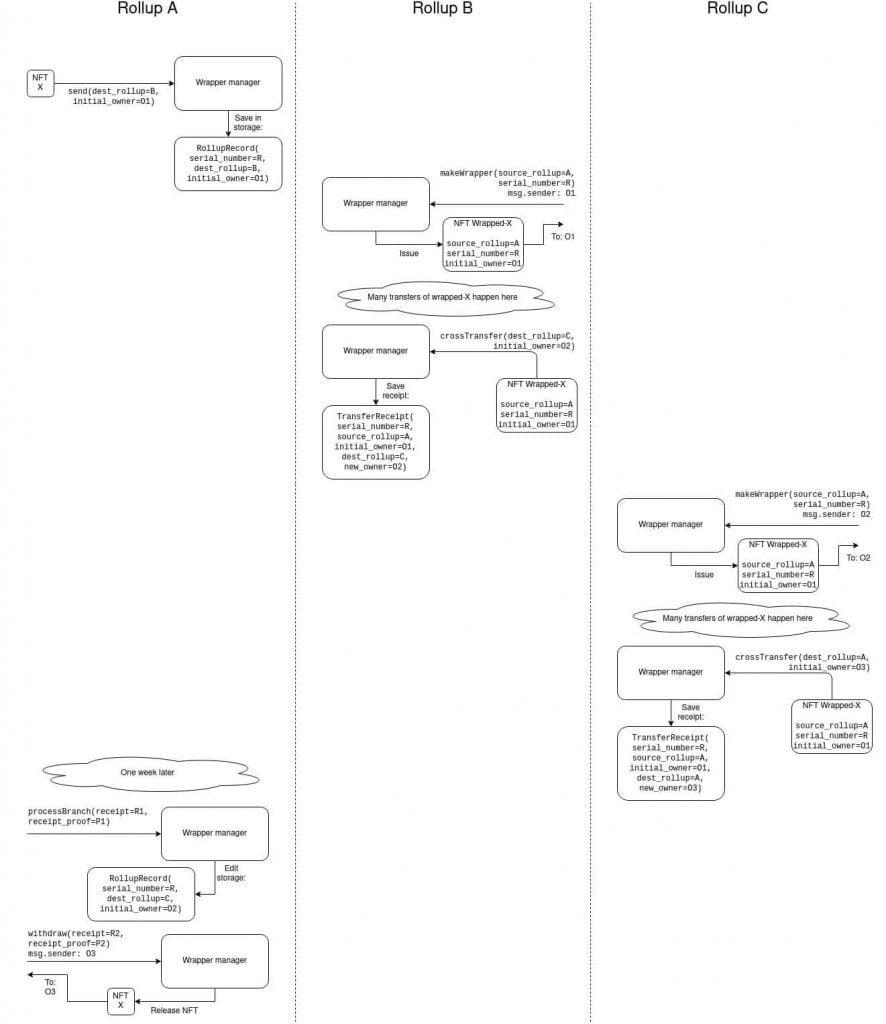With all assets represented on the blockchain, as NFTs, the entire economy will run on a blockchain. Vitalik Buterin proposes migrating NFT to second Ethereum layers.
Contents
NFTs and the tokenized society
Ethereum and the Tokenized Society. The importance of Non-Fungible Tokens (NFTs) is related to the birth of the tokenized society.
“NFTs are the basis of a world where instead of having paper records that say you own an apartment, car, or TV, people will tokenize everything. That has great advantages. For example, I can pawn it and get a credit that I put as collateral for something else if I have my TV. Or everything that has to do with insurance or property,”
Jordi Baylina
Jordi Baylina, a telecommunications engineer and Ethereum software developer, says it is difficult to explain what is happening. He says he has told his father about it several times but never quite understands it. All in their twenties, his children’s friends have asked him to call a meetup because they don’t understand it.
Regarding NFTs, its secret does not lie in whether or not an NFT has value. “It resides in the social contract. If a group believes it is money, that token already has value. Dollars or euros have value because I can buy anything with them, and I can do that because everyone believes they have value. The same thing happens with NFTs. When people believe that whoever owns an NFT of an apartment is the owner of the property, they will start to work in the real estate sector“.
He indicates that the revolution has not started because people must realize what is happening.
“In Paris, Vitalik recalled the domain names on the Internet, which are NFTs. Whoever owns the NFT owns the domain. NFTs are good for any physical or virtual good. Being able to do all these things from your home, with transparent rules and leveraging all the ideas behind decentralized finance. Leveraging Decentralized Finance (DeFi) for real cases like the ones I’m citing means that DeFi is one more piece of the whole gear needed to value things. At that point, DeFi will stop being a casino and become the financial system accelerating the economy.“
Everything is susceptible to becoming NFT
Everything can be susceptible to becoming an NFT, from consulting hours to potatoes grown by a farmer. This democratization of markets and finance, with transparent rules for everyone, is the dream of many people. Smart Contracts eliminate intermediaries from the markets and make a much fairer society possible, he says.
Regarding the interoperability of blockchains, Baylina points out that this is a complicated debate and that it is not yet clear if there will be one blockchain or many. “The implementation of this technology is not linear. Also, when the Internet emerged, there were different ways to make a search engine. Google proved to be the good one. If not, there would have been more search engines. We are at the stage where we don’t know. There must be many projects and a lot of gray matter“.
Buterin proposes migrating NFT to the second Ethereum layers
Vitalik Buterin recently published a proposal within the Ethereum Research Forum, dedicated to researching improvements in this general-purpose blockchain. The Russian-Canadian developer suggests the creation of “rolled-up NFTs” or wrapped-NFTs. These could be mobilized and traded between the different Ethereum rollups.
Based on the above, Buterin’s proposal’s main point is the non-reliance on a single rollup. While this offer to reduce commissions, using one can be counterproductive since, in the event of a failure, NFTs would get trapped.
Using multiple rollups avoids this dependency model. In case of failure, the trapped NFTs can migrate to another rollup or the mainnet through the proposed system.
Exchanging “rolled-up” NFTs
As mentioned, the Ethereum creator’s proposal rests on creating wrapped-NFTs (WNFTs). In a practical sense, these would be tokens representing other tokens within the rollup. The original WNFT would be stored directly on the Ethereum blockchain via a Smart Contract that would serve as a security vault.
What’s interesting about this concept is the mobility of WNFTs when users begin transferring them. For example, Adam “rolls up” a WNFT and sends it to the Arbitrum rollup. In this, Bea decides to buy it. Bea would be purchasing the WNFT and not the original NFT. However, according to Vitalik’s proposal, an exchange voucher would be generated since there is a transfer.
When Bea wants to claim it within the main chain, he only has to present the voucher so that the vault can change the address holding this WNFT from Adam to Bea.


If a chain of exchanges happens within a rollup, the last WNFT holder who claims it will possess this chain of exchanged tokens, which will validate the holding on the claimed NFT. The mechanism also applies to NFTs transferred between rollups, which would also generate vouchers.
Vitalik Buterin’s proposal presents challenges to implementing it
One of the main challenges within this model by Vitalik Buterin is that it will not use all rollups currently operating on the Ethereum network. The rollup must make use of Ethereum’s EVM or virtual machine, which is the one that allows the execution of Smart Contracts.
Rollups such as Arbitrum and Optimism allow the full use of EVM. On the other hand, zkSync 1.0 does not allow complete execution, limiting the Smart Contracts deployed in them. Another obstacle lies in adopting and implementing this model across all NFT platforms. For now, NFT platforms settle on the Ethereum mainnet. Using rollups can mean an operational cost for adopting and migrating their NFTs. Platforms may not be willing to bear that cost.
Zk-rollups for scaling Smart Contracts
Zk-rollups technology uses zero-knowledge proof-of-stake technology to verify the correctness of large transactions. Rollups are already operational, and it is only a matter of time before exchanges integrate them.
Three companies are currently working hard on scaling Smart Contracts with Zk-rollups technology. One of them is Hermez. They said, “We just presented our plan in Paris, and people have been very excited about the expectations generated. We have brought a very different vision to how others do it. The important thing is that we are at a stage where we understand the problem much better and can accelerate. We are happy because, in one month, we have seen things possible on issues that seemed impossible before. Now a lot is evolving, and we can discuss scalability and consolidation. However, we still have to wait“.
